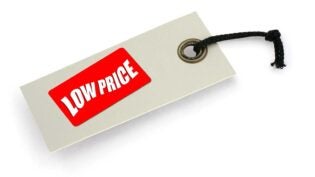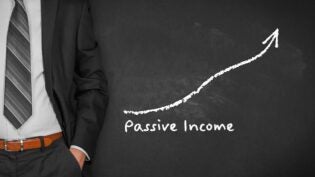
It’s obvious that the price of your products have a lot to do with the profitability of your business. Exactly how to price products in a way that maintains or increases your profitability is a little less obvious. Here are the first two steps toward developing an effective pricing strategy for your small business.
Do Your Break-Even Analysis
Pricing strategies differ, but all require you to calculate your expenses accurately. Most people underestimate their costs. So if you price your products based on an estimation of your expenses, your profits are likely lower than you think!
A thorough break-even analysis will tell you precisely what sales and revenues you need to be profitable with a margin of safety. A basic analysis consists of adding up your fixed and variable costs, then making sure (whatever pricing strategy you use) that your revenue exceeds that sum.
If you’ve been creating financial statements for your business, you should have an organized record of your expenses. If you haven’t yet created income statements, create a list of expenses that include:
- Materials costs
- Labor costs
- Overhead costs
Overhead costs are the easiest to forget, since they are indirectly related to the cost of making a product. They include expenses like admin assistance, rent, taxes, advertising, supplies, utilities, delivery costs, business insurance, association memberships, and travel.
Choose from Two Common Pricing Methods
Most pricing strategies fall into two basic approaches. The first is industry-focused. It asks, “How much profit can I make while staying competitive?” The second is customer-focused. It asks, “How much profit will my customers give me?”
There is no right method, and they are not mutually exclusive. Choosing between them gives you a framework for initiating a pricing strategy and will affect what kinds of research and numbers you focus on as you develop it over time.
Cost-based (“cost-plus”) pricing
Cost-based or cost-plus pricing is what most people traditionally associate with pricing strategy. This method arrives at the price of a product by starting with the cost of that product’s production. It then adds a profit, often between 10-20%, to that production cost. A chair that cost $3 in materials, $40 in labor, and $7 in overhead to make (i.e. $50) would be marked up to $55 or $60, depending on the amount of profit the company expects to make.
The downside of cost-based pricing is that it puts you in a constant (cold) price war. If an otherwise identical company improves their efficiency or grows big enough to take advantage of economies of scale, their costs are now less than yours. They can provide the same quality and enjoy the same profit margins as you do—with a more competitively-priced product.
If you use cost-based pricing, be particularly attuned to lowering your costs in every way possible. Choose an inexpensive location, find quality low-cost suppliers, control your inventory carefully, and offer a limited number of products and services.
Value-based pricing
In value-based pricing, the sky’s the limit. You don’t start with a predetermined profit margin. Instead, you try to calculate how much value your product creates for your customers and price accordingly. This results in more profit potential as well as more uncertainty and research.
The most extreme examples of value-based pricing include “pay for performance” and “pay what you want.” In pay for performance, you charge on a scale according to the results of your customer’s use of the product. For example, if your ergonomic chair saves a customer $800 in medical bills, you might charge $100 instead of the cost-based price of $55. In pay what you want, customers name their own price after receiving a product or service. While it’s obviously very risky and hard to do well, an increasing number of companies are using this strategy profitably.
The downside of value-based pricing is that it requires extensive research. You need to get a lot of feedback from current and potential customers to make sure you understand not only what makes your product valuable but also exactly how much they’ll pay for each benefit.
If you choose value-based pricing, develop a razor-like focus on what’s important to your customers. Develop a strong value proposition based on concepts like excellent customer service, exclusivity, or deep expertise, and use it in all of your marketing.
Calculating your break-even point and choosing between a cost- or value-based approach are the first steps in a thoughtful pricing strategy. Grasping these basics give you freedom to experiment with pricing and develop a mature strategy that fits your business and your market well.
Author: Michael Jones is the Director of Community Development at Bond Street, a company focused on making small business loans simple, transparent, and fair. Contact Michael at Michael@Bondstreet.com












